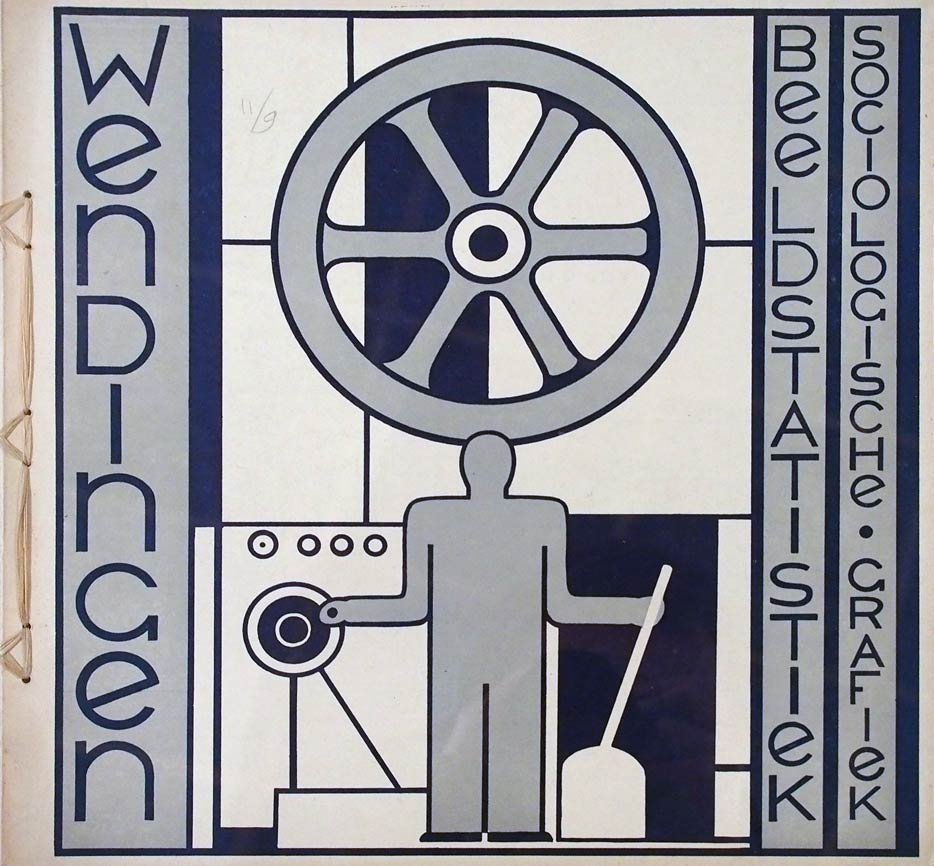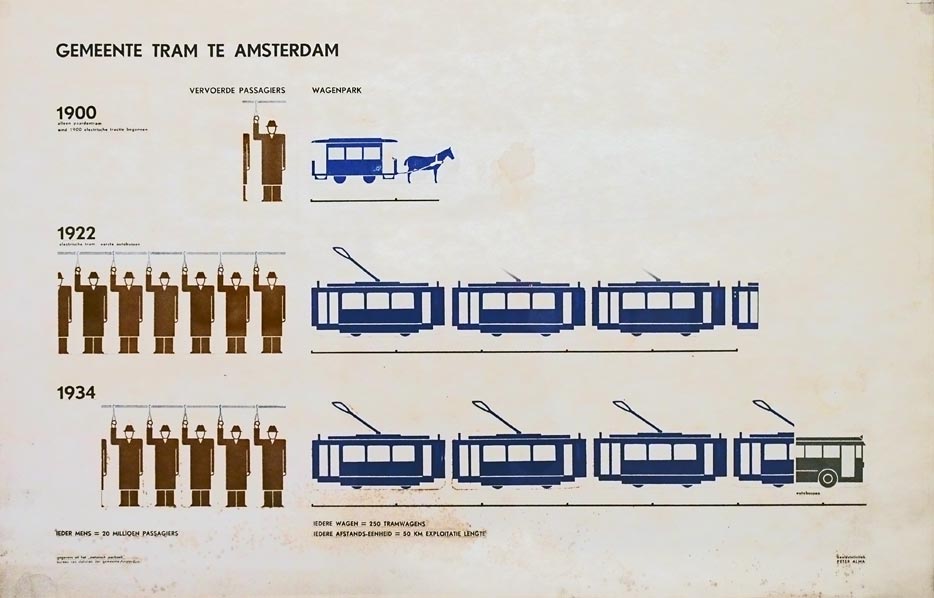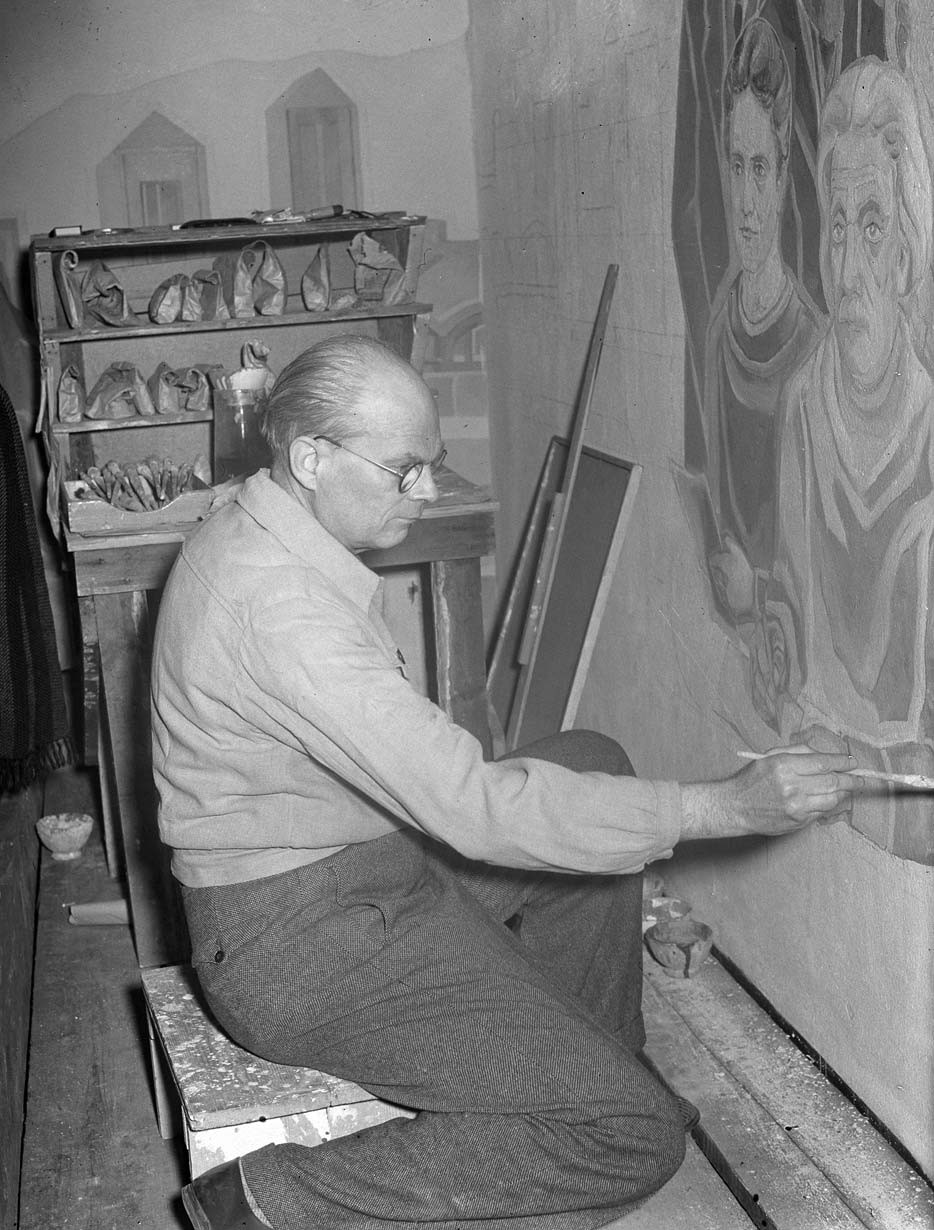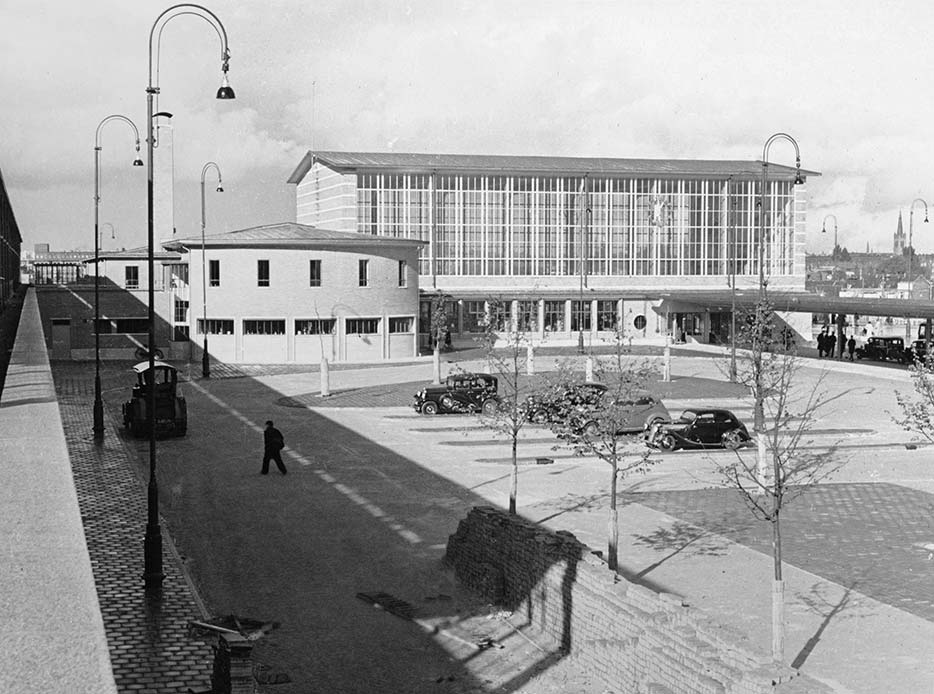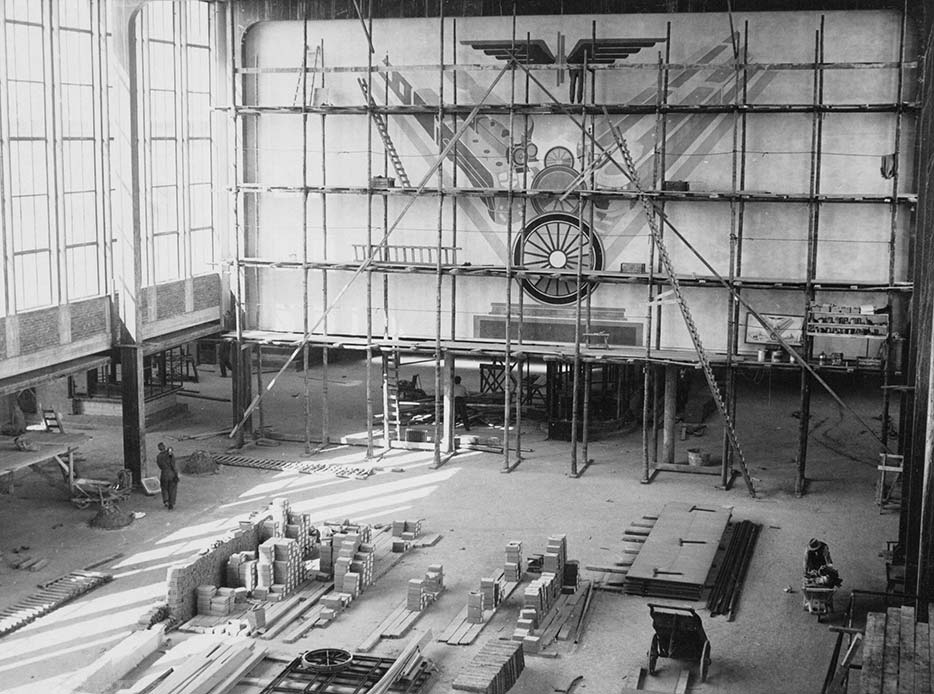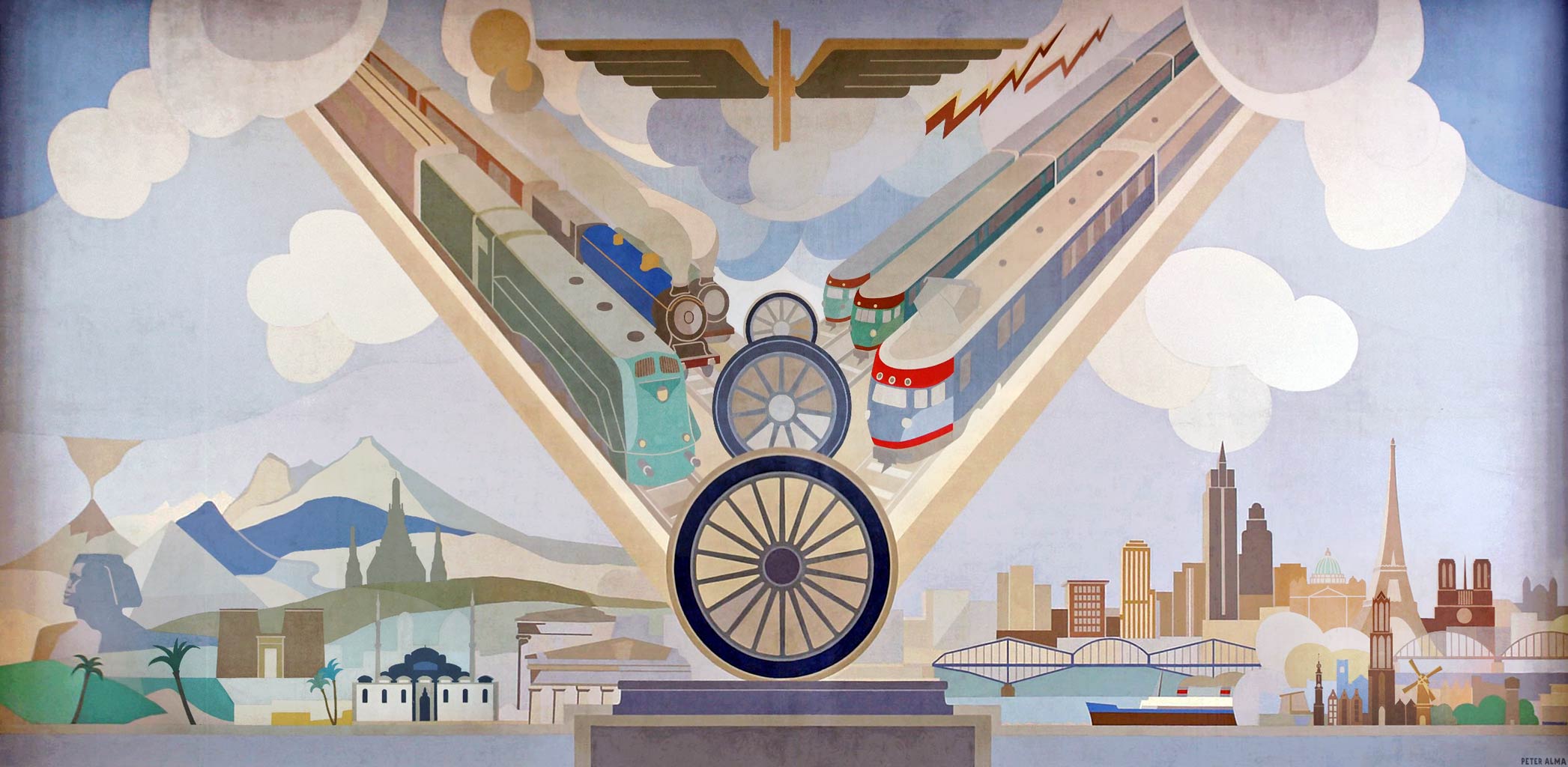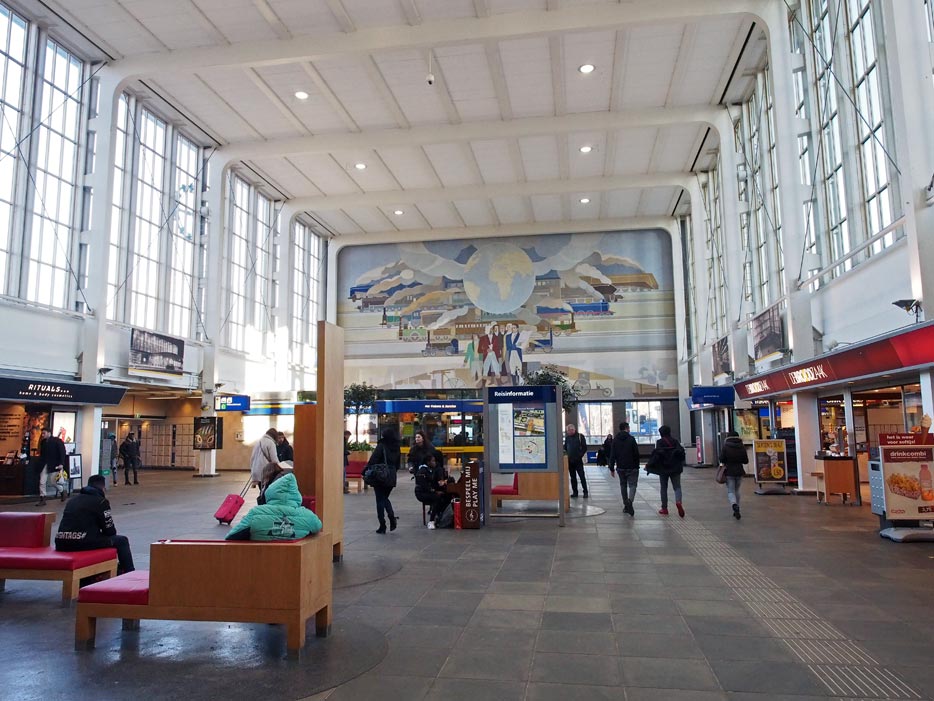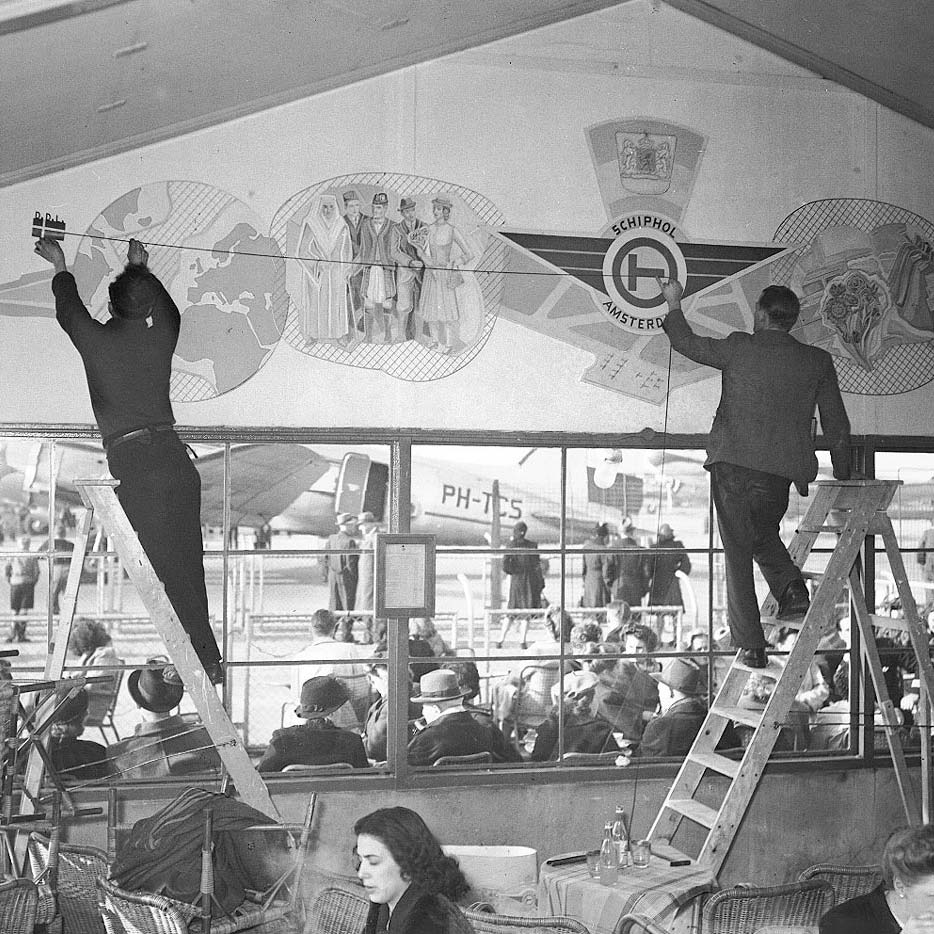The Global Significance of the Railway System
Transportation on Peter Alma's murals
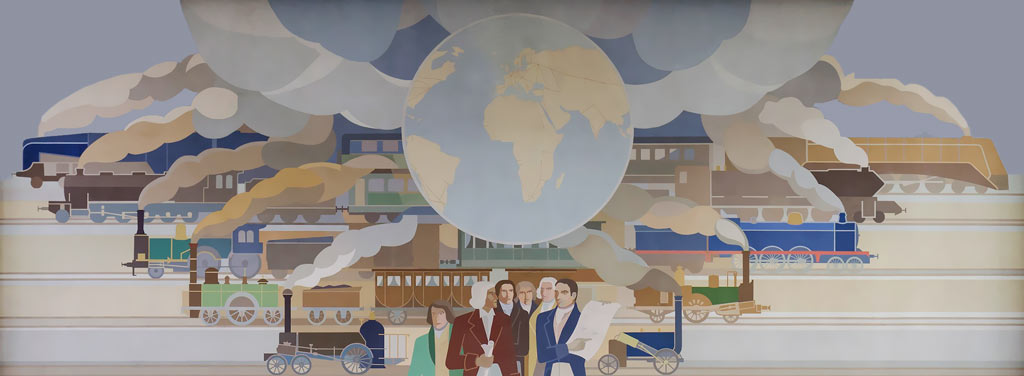 Nederlandse versie
Nederlandse versie
Dutch painter Peter Alma became primarily known for his impressive murals in the Amsterdam Amstel railway station of 1939. He was also one of the pioneers of 'De Stijl', the abstract art movement headed by Mondrian that started exactly one century ago this year — the occasion for a current exhibition dedicated to Alma's work.
Because of his communist ideals Alma swapped abstraction for a figurative visual language that everyone could understand. Searching for art forms with a broad social scope, he devoted himself to wall paintings in public buildings. In his murals, transportation — railways, shipping and aviation — constituted a major theme.
Paintings
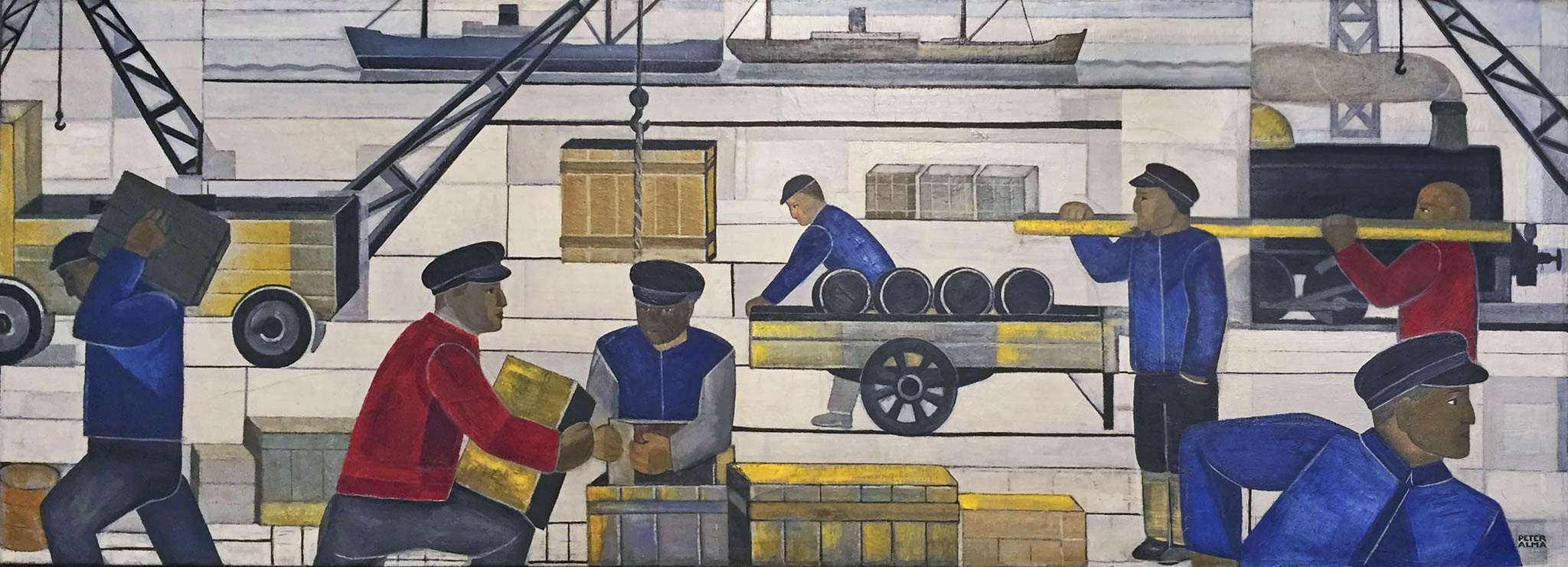
Peter Alma (1886-1969) attended the Hague Academy of Arts until 1906 and the Académie Humbert in Paris until 1914. There he became friends with painters Piet Mondrian and Fernand Léger, with whom he exhibited in the Salon des Independants. In Paris Alma also met the Norwegian artist Edle Saxlund. They got married and during the First World War the couple lived in the Dutch artists' village of Laren, along with Bart van der Leck and Piet Mondrian.
Strongly influenced by Van der Leck, Alma's work contributed to the development of De Stijl movement. In 1918 Theo van Doesburg criticized Alma and Van der Leck for their use of diagonals. He also objected to the mix of abstract and figurative forms in Alma's Saw with goldfish bowl. Alma subsequently chided Van Doesburg for his lack of political commitment and went a more figurative and social direction himself. His 1924 painting Transport mainly focused on workers loading and unloading freight.
Pictorial statistics
As a form of art with more social relevance, Alma engaged in sociological graphics or pictorial statistics, a method of creating insights into abstract data by using symbols. He wrote an article about this in the Wendingen design magazine in 1930, for which he also created the cover.
Pioneers Gerd Arntz and Otto Neurath of the Wiener Method of Bildstatistik (later called Isotype) asked Alma to cooperate in the founding of Isostat, the Russian institute of pictorial statistics. Alma, eager to help the spread of communism, left via Vienna for the Soviet Union in 1932 and spent almost a year in Moscow and Kharkov.

After returning to the Netherlands Alma started his own pictorial statistics agency. He was commissioned by the City of Amsterdam, KLM Royal Dutch Airlines, Fokker, the Port of Rotterdam, and others. Topics were, for example, 'Passengers and freight at Schiphol Airport' and 'The use of the telephone in Amsterdam'. Alma started an 'image bank' of symbols for re-use, including means of transport. This simplified way of depicting influenced his later murals.
Wall paintings
Looking for social applications of art, Peter Alma also started creating public artworks. Amsterdam was one of the first cities that allocated a budget for art in public buildings. In 1930 Alma created his first wall painting in the public library of a housing complex in Amsterdam-Zuid (now lost). The educational mural about world cultures (Races of the Earth) served to emancipate the working class. One year later the mural Trade and its means of transport followed in Amsterdam's Second Public Trade School (currently Berlage Lyceum).
Alma divided the 20 meters long and 1 meter high frieze into five scenes. On the central wall modern means of transport on land, at sea and in the air are portrayed. We can see a train crossing a steel bridge on the left, in the center a modern city with an airship and airplanes above, and steamships along a quay at the right. On the two side walls Alma pictured primitive sled transport in polar regions and a camel caravan crossing the desert.
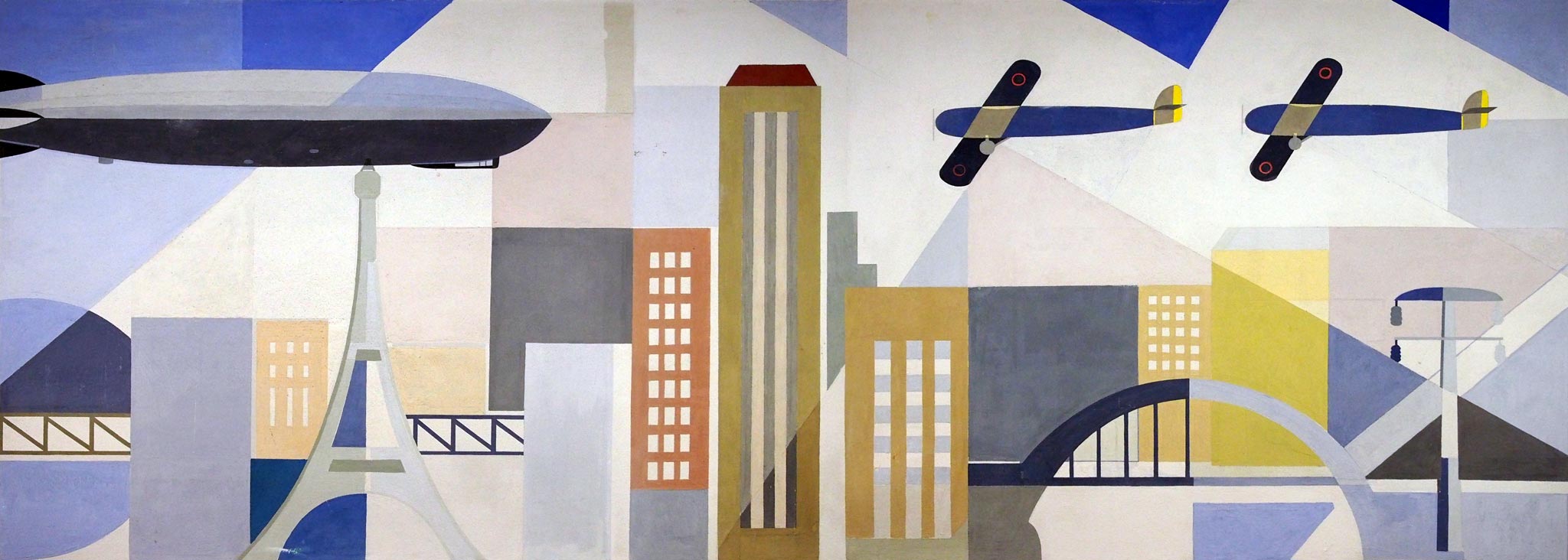
When we talk about murals as community art, we thereby assume not only a beautiful decoration of the building, but also a representation that is related to the purpose of the building and the community.
Now, wall paintings are most suitable in public buildings and institutions with a social purpose, in gathering places like theaters and concert halls, premises for medical services, post offices, railway stations etc.
And I believe this will be an important tasks for artists in the future, that is to portray one or more aspects of the social purpose of these buildings.
And when the artist translates his subject matter into simple and clear language, without falling back to unrealistic literary symbolism, he will be able, without compromise and opportunism, to speak to the public. Because a mural must speak to the people, it should uplift and enrich them.
Amsterdam Amstel murals
In 1939 the east of Amsterdam was given a strikingly modern railway station to replace the Weesperpoort station (located elsewhere). It was situated on the new elevated railway to Utrecht and designed by H.G.J. Schelling, architect of the Dutch Railways. Instigated by the city, which partly funded the station, Schelling optimized the transfer options for bicycle, car, bus and tram. His goal was an "ordered system of modes of transport".
At the end walls of the high and light station concourse, murals were projected. A closed design competition was held among five artists. Among the jurors were Heinrich Campendonk, professor of Monumental Art at the National Academy, and architect Schelling. The proposed designs had to "connect the minds with travel and traffic in a positive way", but the artists were not limited in any other way.
The winning design was by Peter Alma, entitled The global significance of the railway system, and its technical progress. The jury appreciated the composition, color palette and simplicity of the scenes, while the other entries featured a lot of worn symbolism. The execution was not easy: the two surfaces were 20 meters wide and 9 meters high. Alma had to work on high scaffolding and told it was like "living vertically" for almost half a year. He was assisted by Jan Bons.
The eastern wall represents the development of steam locomotives, with a group of inventors and a globe with railway lines in the center. The west wall shows the results of the technical development: modern-day steam and electric trains topped by a winged wheel, the symbol of railways.
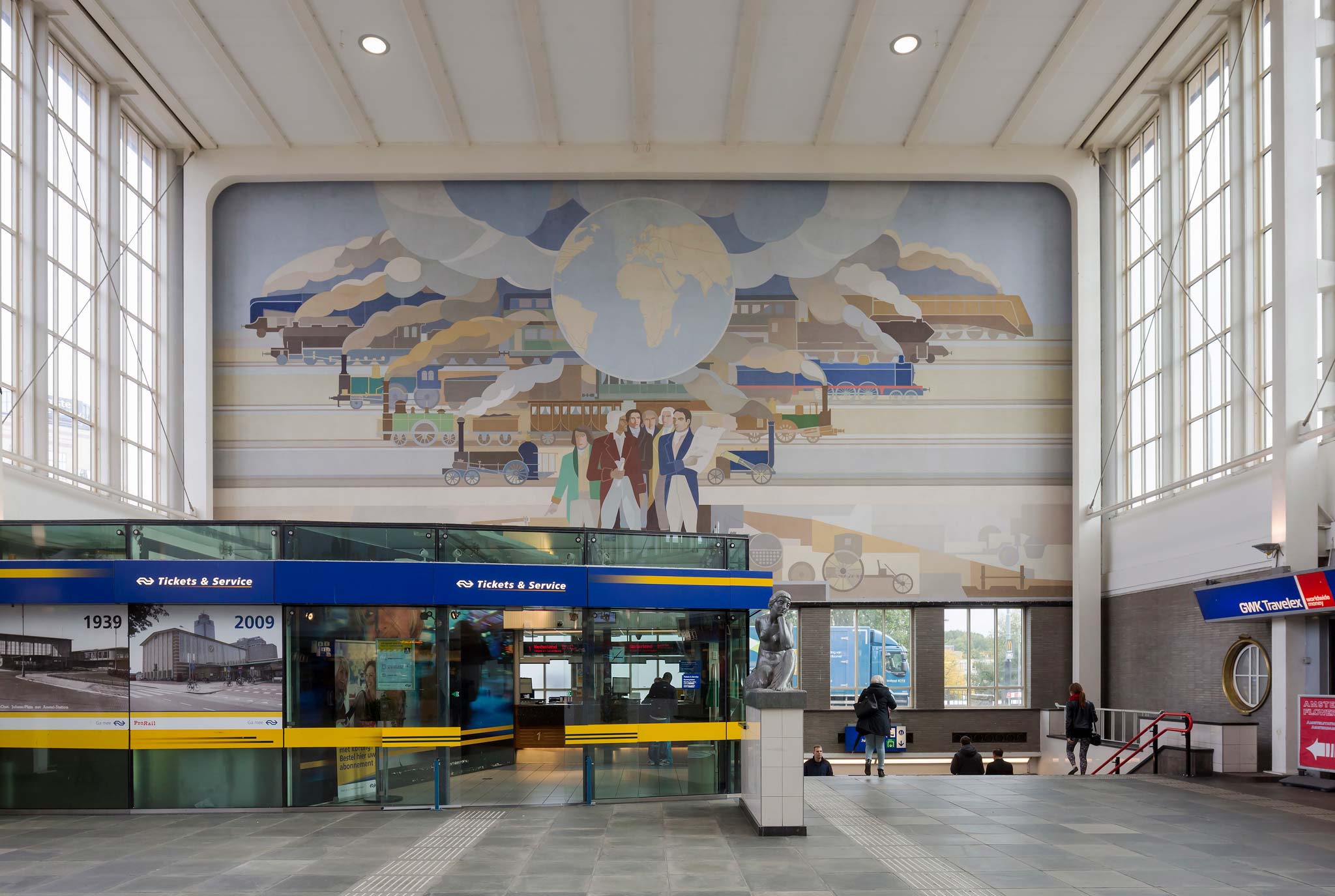
On the left of the west wall Alma pictured contemporary steam locomotives. The light-green futuristic one looks like an American diesel engine, but is in fact a Russian steam locomotive. The two 'windows' on the front are air vents in the streamline shell of locomotive IS 20-16. It was the fastest Soviet steam engine with a top speed of 180 km/h. The locomotives of this IS class were named after Joseph Stalin (IS = JS). Alma admired the technical and social 'progress' under Stalin and did not believe reports about the Stalinist purges.
On the lower part the 'old and new world' are represented, or east and west. On the left we see the Sphinx and pyramids of Egypt, a pagoda at Bangkok, a Constantinople mosque and Greek temples.
The right side of the western wall shows the streamlined trainsets of the Dutch railways of the 1930s. The country's first modern rail car was the diesel-electric Mat '34, which needed no overhead wires. A few years later the all-electric Mat '36 appeared. Alma consciously or unconsciously swapped the silver-gray livery of the DMU's (without pantographs) with the green of the electric train (with pans).
On the lower right we see the 'new world' with the Empire State Building, St. Peter's Basilica in Rome, the Parisian Eiffel Tower and Notre Dame, the Amsterdam Exchange and Munt Tower, and the Dom Tower of the Dutch 'railway capital' of Utrecht.
Other works

After his magnum opus at the Amstel station, Alma used the transportation theme again in some smaller works. For the Dutch stand at the 1940 Leipzig Fair he created a kind of mixed media collage on trade traffic between the Netherlands and Leipzig since 1723: by carriage, steam train and electric train (though the depicted trainset did not run on international connections). This contribution to the trade contacts with fascist Germany was notable because Alma previously participated in artists' protests against the Olympic Games in Berlin.
Shortly after the end of World War II, Alma created a mural in the restaurant at the departure hall of Schiphol Airport (not preserved). It consisted of a globe, a group of passengers, a birds' eye view of the airport, and freight (flowers, mailbags and parcels). The diamond pattern drawn in the backgrounds of the scenes resembled the steel mat Alma previously used at Leipzig.

At the 50th anniversary of the SHV Coal Trading Association in 1946, Alma designed three small windows for the Rotterdam branch (later placed in the Utrecht headquarters). The windows representing coal transport by rail and ship constitute the only stained glass Alma ever designed.
During the Dutch post-war reconstruction period monumental wall art was flourishing. In the 1950s Peter Alma created murals for the University of Amsterdam, the Postal Museum at The Hague, the NINT and the Dutch PTT. The transportation theme did not appear in these works; however Alma's tile tableau for the Marnixbad swimming pool of 1955 was later relocated to the Amstel station.

